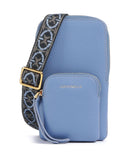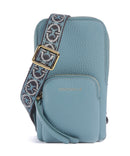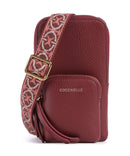Trier En vedette
-
Eagle Creek Cargo Hauler XT 90 Sac à dos à roulettes glacier blue -
Burkely Natural Norah Pochette telephone grass green -
Piquadro Blue Square Sac de poignet blue -
Coccinelle Nastro Signature Bandoulière chalk/noir -
Coccinelle Tebe Pochette telephone noir -
Osprey Renn 50 Sac à dos de trekking pediment grey/linen tan -
Armani Exchange Susie M Sac à main nero -
Coccinelle Raquel Sac seau blanco/skin -
BOSS Crosstown Porte-document black -
FredsBruder Bestseller Sac bandoulière powder rose -
Coccinelle Tebe Sac bandoulière noir -
Vaude Cycle Sacoches de guidon heron -
Samsonite Citybeat Valise 4 roues navy blue -
Eastpak Transit'R L Sac de voyage à roulettes black -
Vaude Banaba Trousse de toilette linen -
Rains Texel Small Sac de voyage black -
Coccinelle Nastro Signature Bandoulière multicolour/natural/noir -
Coccinelle Pixie Pochette telephone noir -
Valentino Bags Alexia Sac bandoulière nero -
Horizn Studios Top Case Accessoire de voyage all black -
Thule Chasm 90 Sac de voyage olivine -
Deuter Xberg 25 Sac à dos de vélo cactus/desert -
Furla Camelia M Étui à cartes crédit nero -
Samsonite Citybeat Valise 4 roues navy blue
Exclusive designer bags by Gucci
Founded in 1923 by Guccio Gucci in Florence, the Italian designer label Gucci initially created exclusive bags made of high-quality leather in a small workshop, which quickly gained popularity due to their craftsmanship. As the success grew, Gucci opened several branches in Italy. In 1947, the globally known Gucci logo, consisting of two connected stirrups, was introduced. This logo still adorns the brand's handbags today. In the 1950s, Gucci began its international rise and became one of the most famous handbag and fashion labels worldwide. Today, Gucci also produces successful collections of shoes and clothing alongside handbags. Since World War II, materials such as hemp, bamboo, and linen have been incorporated into production, adding to the distinctive style of Gucci handbags. Branches were opened in the USA and across Europe, and prominent personalities like Audrey Hepburn wore Gucci creations. Today, Gucci handbags are the epitome of luxury and craftsmanship and are a coveted status symbol worldwide.
Gucci sets new standards
In the 1980s, the Gucci heirs sold the brand to an investment company from Bahrain. Later, the Parisian luxury goods manufacturer Pinault-Printemps-Redoute acquired the brand, paving the way for a new era. The creative turning point came in the late 1990s with Tom Ford as the new creative director. Ford not only brought fresh ideas to the design but also propelled Gucci back to the top of the fashion world. Under his leadership, sales steadily increased. In 1997, Gucci launched its first watch collection alongside many successful handbag collections, which also enjoyed great success. The following year, Gucci was named European Company of the Year. The name Gucci has become synonymous with luxury worldwide, continually setting new standards for exceptional materials and innovative design. In 2001, Gucci acquired the label of Stella McCartney, further strengthening the brand and solidifying its significance in the fashion world.
Gucci handbags as the epitome of luxury
Gucci bags represent the perfect blend of craftsmanship, quality, and groundbreaking design. The brand has constantly evolved while never losing sight of its traditional values. Today, Gucci is considered the benchmark for extraordinary luxury bags. The timeless designs and the selection of the finest materials make every Gucci handbag a unique masterpiece. Whether classic models or innovative reinterpretations – Gucci knows how to fulfill the desires of the most discerning customers. With a Gucci handbag, you are investing in a piece of luxury that is both functional and stylish.










































































































































































































































